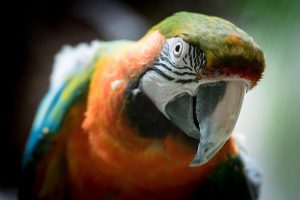
Grasshoppers, crickets and mealworms – oh my!
Insects are in vogue in a big way.
These crunchy critters are certainly a craze. There were so many requests for them that we expanded our range of dried insects to include grasshoppers and larger bags of mealworms and crickets. So what kind of pets are gobbling up these delicacies?
Chickens

Chickens require a diet of around 16% protein although pullets and laying ladies will benefit from a little extra. Mealworms contain a huge amount of natural protein and also stimulate a chicken’s natural foraging tendencies. They might not look too appealing to us as a treat but their crumbly, rich texture sends chooks into a right flap.
Reptiles

Low maintenance and fascinating to watch, pet reptiles have won over Kiwis in a big way. Bearded dragons, axlotls and blue-tongued lizards need a range of fresh foods, including lots of insect protein. Feeding two to five crickets or grasshoppers each day is a natural way to diversify food offerings using a sustainable protein source. Our dried insects are in hot demand from reptile owners.
Insect-feeding wild birds

Scattering a few mealworms around the garden brings a host of feathered visitors, particularly in winter when natural food sources are scarce. Small New Zealand natives like the grey warbler and pīwakawaka are natural insect feeders but often get pushed aside by larger species like blackbirds and starlings. Scatter a few in the bushes or piles of leaf litter so everyone gets a chance!
Carnivorous fish

While most pet fish are herbivores, there is a clear trend toward keeping omnivorous and carnivorous fish. They require a delicately balanced diet with significant amounts of protein. Mealworms provide essential lipids as well as being packed with protein.
Aviary birds

Crickets have long been a popular source of protein with bird breeders, particularly for raising strong doves, pigeons, quail and parrots. Canaries, finches and other smaller species love mealworms as part of a varied and balanced diet that replicates food sources in the wild.
Read more from us

Sustainable Christmas gifts that will mean a lot
Unless you like driving around in circles looking for parking and playing cart dodge-ems in the crowds, shopping centres should probably be avoided at this time of year.

One swallow doesn’t make a summer…
Here are four bird-themed cocktail recipes you may want to try in the warm twilight hours ahead…

Seasonal Bounty: Asparagus
Delicious simply pan fried in butter or olive oil, the elegant asparagus also features as the star of many springtime recipes. Here are five of our latest favourites.

